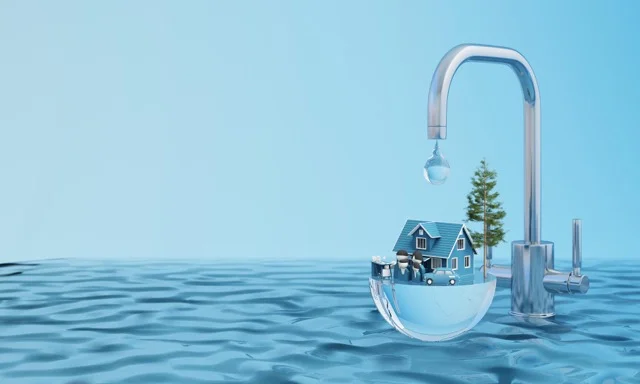The Ultimate Guide To Reclaim Waste
The Ultimate Guide To Reclaim Waste
Blog Article
The Only Guide to Reclaim Waste
Table of ContentsOur Reclaim Waste StatementsThe Ultimate Guide To Reclaim WasteThe 6-Minute Rule for Reclaim WasteNot known Facts About Reclaim WasteMore About Reclaim Waste
Residential sewer waste refers to the waste and items from a residential septic container. The correct monitoring and disposal of residential sewer waste need fluid waste to be transferred to a sewer treatment plant where the correct techniques and tools are applied to cleanse and dispose of waste.
Business waste typically consists of potential dangers, such as combustible materials or a mix of fluid and strong waste products, and requires an advanced and comprehensive disposal process. The disposal of business waste normally entails the filtering of waste before transport to make certain safe and proper disposal. Industrial waste is produced from results and drainage of commercial processes and manufacturing.
This type of waste can not use the same sewage monitoring transportation or processes as septic or business fluids. The hazardous waste monitoring procedure calls for the inspection and testing of liquid waste before it undergoes the disposal process (industrial wastewater treatment). Drainage waste is the fluid waste that originates from drainage and excess stormwater in very booming locations or cities
Drainage waste can trigger contamination and flooding otherwise managed effectively. Discover more concerning sewage system cleansing and waste administration. Making certain correct waste monitoring can protect against calamities and lower ecological injury. Both individuals in property settings and professionals in commercial or manufacturing markets can take advantage of comprehending the procedures and regulations of liquid waste monitoring.
Reclaim Waste for Beginners
Call PROS Services today to learn more about our waste monitoring and disposal services and the appropriate means to take care of the fluid waste you generate.
(https://leonaube33101.wixsite.com/reclaim-waste/post/effective-liquid-waste-removal-and-disposal-everything-you-need-to-know)Do you know what takes place to your water when you end, flush the commode or drain the cleaning maker? No? Well, it's worth recognizing. This so-called 'wastewater' is not just an essential resource but, after therapy, will be launched to our land, waterways or the ocean. Made use of water from commodes, showers, bathrooms, kitchen area sinks, laundries and commercial processes is called wastewater.

water utilized to cool down machinery or tidy plant and equipment). Stormwater, a type of wastewater, is runoff that streams from farming and metropolitan locations such as roofing systems, parks, yards, roads, courses and seamless gutters into stormwater drains pipes, after rainfall. Stormwater flows without treatment directly to neighborhood creeks or rivers, ultimately getting to the ocean.
Rumored Buzz on Reclaim Waste
In Queensland, the majority of wastewater is dealt with at sewer therapy plants. Wastewater is moved from residential or commercial websites with a system of drains and pump stations, known as sewerage reticulation, to a sewer treatment plant.
The Division of Natural Resources advises city governments concerning handling, operating and keeping sewage systems and treatment plants. In unsewered areas, regional governments may require owners to mount private or home sewage therapy systems to deal with domestic wastewater from toilets, cooking areas, bathrooms and laundries. The Department of Natural Resources authorizes making use of home systems when they are proven to be reliable.
In some new communities, treatment of some stormwater to remove clutter, sand and gravel has started utilizing gross toxin catches. Wastewater therapy takes place in 4 phases: Eliminates solid matter.
Makes use of tiny living microorganisms recognizes as micro-organisms to break down and eliminate continuing to be dissolved wastes and fine bits. Micro-organisms and wastes are included in the sludge.
Our Reclaim Waste Diaries
Nutrient removal is not offered in any way sewer therapy plants since it needs costly specialised equipment. It is becoming much more typical in Queensland. Clear liquid effluent produced after treatment may still contain disease-causing micro-organisms. If this effluent is released right into rivers such as rivers or the sea, the micro-organisms will at some point pass away out.

This usually indicates wastewater has actually to be treated or pollutants eliminated before it can be released to waterways. Many Visit Website wastewater moves right into the sewerage system. Under the Act, city governments carry out approvals and licences for eco appropriate activities (Periods) including wastewater releases that could have a neighborhood effect. The department carries out approvals and licences to Ages involving wastewater launches that may have a regional or statewide effect.
Get This Report about Reclaim Waste
Surveillance provides factual information regarding water quality and can verify that permit problems are being satisfied. The details gotten via surveillance provides the basis for making water quality decisions.
Report this page